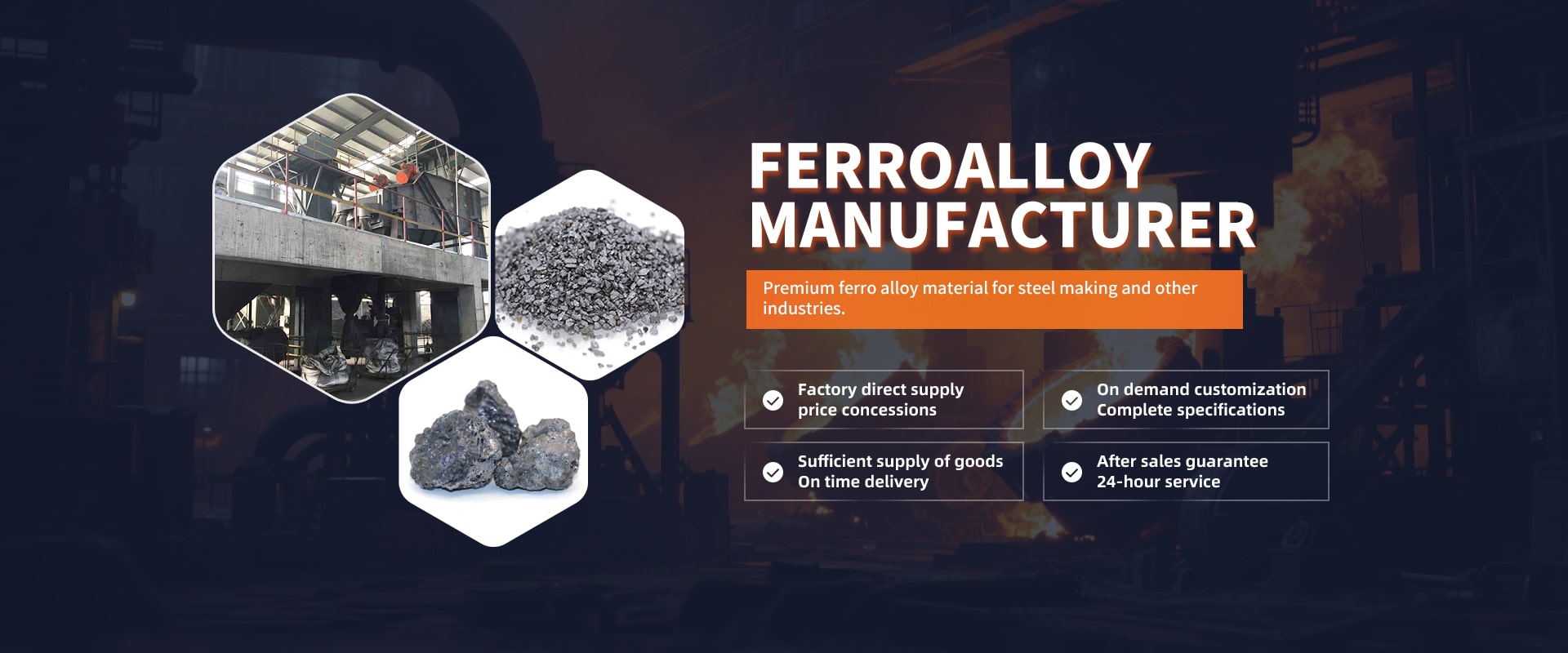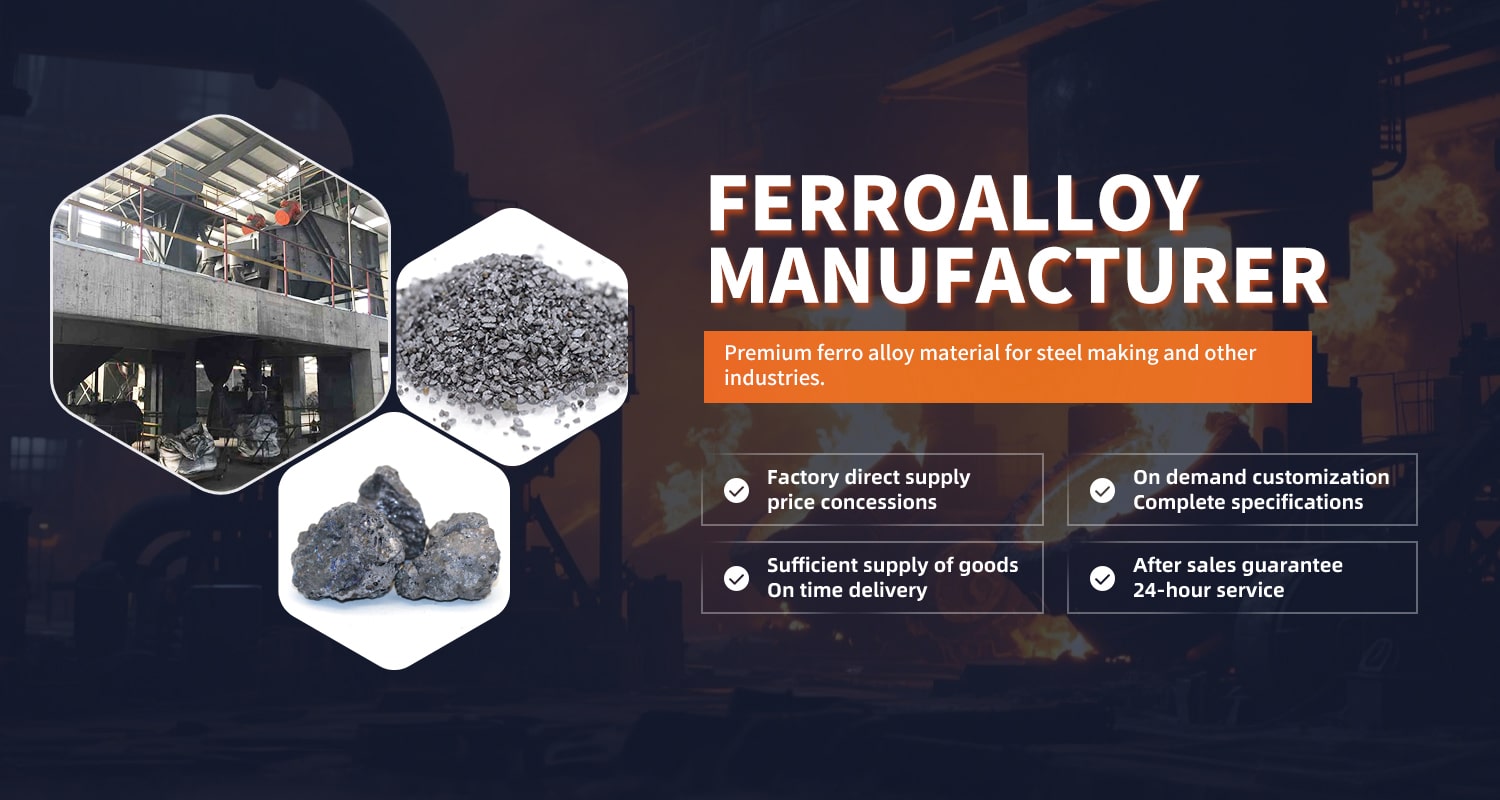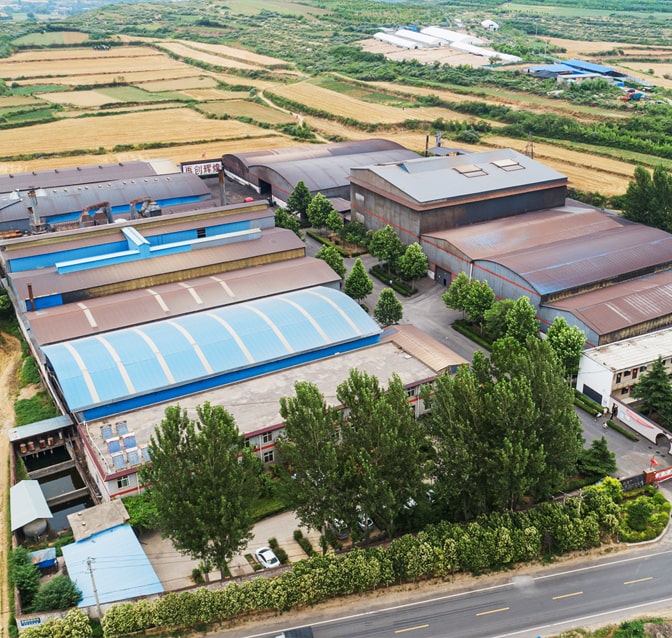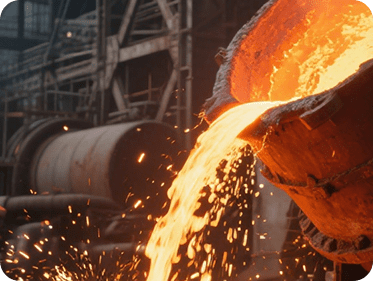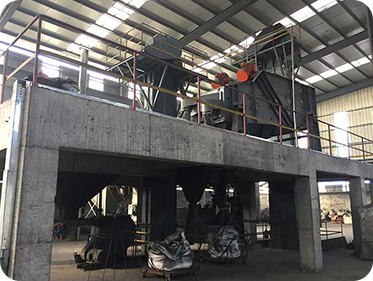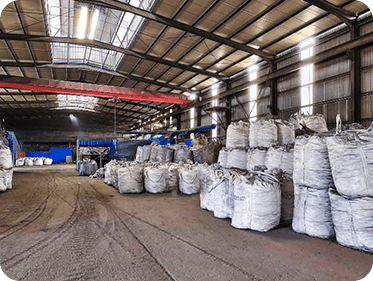Comparing Standard Ferro Silicon and Low Titanium High Purity FeSi: What Are the Differences?
2025.11.28
Ferro Silicon (FeSi) is one of the most essential alloys in modern metallurgy. Whether you are producing ordinary carbon steel or high-performance aerospace alloys, FeSi plays a critical role in deoxidation, alloying, and improving steel properties.However, not all Ferro Silicon is created equal.In recent years, steelmakers around the world have begun shifting from standard Ferro Silicon to Low Titanium High Purity FeSi, especially in industries where steel cleanliness and microstructure control are vital.But what exactly makes these two materials different? And why does titanium content matter so much? Understanding Ferro Silicon and Its Role in SteelmakingBefore comparing the two grades, it's important to understand why Ferro Silicon is used in the first place.Ferro Silicon provides several key metallurgical functions:Strong deoxidizer: Removes oxygen from molten steelAlloying agent: Enhances strength, hardness, and fluiditySlag modifier: Helps improve steel purityFor general steel production, standard FeSi is widely sufficient. But high-performance steel applications require stricter control—particularly of trace elements like titanium (Ti).What Makes Titanium a Critical Element?Titanium is not harmful in all situations, but excessive Ti in Ferro Silicon can create unwanted inclusions during steelmaking. These inclusions:Reduce steel toughnessIncrease brittlenessAffect fatigue resistanceLower the performance of bearing steel, high-carbon steel, and aerospace alloysThis is why modern high-grade steel production increasingly demands Low-Ti High Purity Ferro Silicon.Chemical Composition Differences Between Standard FeSi and Low-Ti High Purity FeSiThe most fundamental distinction between these two materials lies in their chemical composition. Standard Ferro Silicon contains the typical FeSi 72 chemistry, where silicon ranges from 65% to 75%, but impurity levels are comparatively higher. Low Titanium High Purity FeSi maintains a similar silicon range but significantly reduces trace elements such as titanium, aluminum, and calcium. A simple comparison illustrates the magnitude of the difference:ParameterStandard Ferro Silicon (FeSi 72)Low Titanium High Purity FeSiSilicon (Si %)65–7572–75(more stable)Titanium (Ti %)0.05–0.10≤ 0.015Aluminum (Al %)1.0–1.5≤ 0.5Calcium (Ca %)0.3–0.5≤ 0.1Impurity LevelStandard industry levelsUltra-low with refined controlSuitable ApplicationsOrdinary steel productionClean steel, bearing steel, aerospace steelThese compositional improvements directly result in better metallurgical behavior and more consistent steel quality.Application Scenarios1. Standard Ferro SiliconThis grade is widely used in ordinary carbon steel, construction steel, cast iron production, and general-purpose deoxidation applications. It delivers reliable performance at a lower cost.2. Low Titanium High Purity FeSiThis advanced grade is essential for industries demanding ultra-clean steel. It is used in bearing steel, aerospace materials, tool steels, and special-purpose alloy steels where minimal inclusions are critical. Applications Where Low-Titanium High Purity FeSi Creates the Greatest AdvantageLow-Ti High Purity Ferro Silicon is especially important in metallurgical environments where micro-defects cannot be tolerated. Its primary application fields include bearing steel, tool steel, spring steel, aerospace alloys, high-carbon structural steel, and automotive-grade alloy steel. These materials require extreme consistency during refining, minimal inclusions, and reliable mechanical performance after forging, rolling, or heat treatment.Steel producers targeting high-end markets increasingly view Low-Ti FeSi not as a luxury material but as a necessary step to meet international quality standards and certification requirements. As a result, it is gradually becoming the preferred silicon source for steel mills committed to advanced metallurgy.The difference between Standard Ferro Silicon and Low Titanium High Purity FeSi is more than chemical composition—it affects every stage of steelmaking, from refining stability to the mechanical performance of final products. For routine steel production, standard FeSi remains a cost-effective choice. However, for industries where quality cannot be compromised, Low Titanium High Purity FeSi is the superior and increasingly indispensable option.
MORE
Why Are More Foundries Switching to Calcium Silicon Cored Wire? A Look Into the Industry Trend
2025.11.21
In recent years, Calcium Silicon (CaSi) cored wire has gained widespread adoption in steel plants and foundries across the globe. With its precise alloy addition, superior inclusion modification, and stable metallurgical performance, CaSi cored wire is quickly becoming an industry-standard refining material.As a leading manufacturer, Anyang Hongshun Industrial Co., Ltd. has been at the forefront of this transition, supplying high-quality CaSi cored wire that meets the evolving needs of modern steelmaking. The Rising Demand for Smarter Refining SolutionsGrowing Expectations for Clean SteelThe demand for cleaner steel continues to rise in high-end sectors such as automotive, aerospace, and energy. Calcium treatment is essential for modifying inclusions and improving steel flow.CaSi cored wire delivers consistent calcium recovery, enabling steel plants to meet stricter quality requirements with greater reliability.Comparison of Alloy Feeding MethodsCaSi Cored Wire vs Traditional Feeding MethodsItem / IndicatorTraditional Alloy FeedingCaSi Cored Wire FeedingCalcium RecoveryLow, unstableHigh, stableOxidation LossesSignificantMinimal due to steel strip jacketFeeding ControlManual, inaccurateFully controllable, automatedSteel CleanlinessInconsistentConsistently improvedCost EfficiencyHigher alloy consumptionLower total costNozzle CloggingFrequentGreatly reducedKey Advantages Driving the Industry Shift1. Improved Inclusion ModificationCalcium converts solid alumina inclusions into liquid or semi-liquid calcium aluminates more effectively when introduced through CaSi cored wire, resulting in smoother steel flow, fewer clogging issues, improved surface quality, and more stable mechanical properties.2. Higher Calcium Recovery RatesThe steel-strip sheath of CaSi cored wire prevents premature oxidation and enables the calcium to be released at the optimal depth, giving significantly higher recovery rates compared with conventional lump or powder feeding and improving overall alloying efficiency.3. Lower Overall Production CostsAlthough CaSi cored wire may seem more expensive initially, its metallurgical benefits—such as reduced nozzle blockage, shorter tundish downtime, lower defect rates, and decreased alloy consumption—translate into substantial cost savings and improved plant productivity.4. Enhanced Casting PerformanceCaSi treatment contributes to better castability, particularly in continuous casting, providing more stable steel flow, fewer interruptions, higher process reliability, and increased output per heat. Why Foundries Are Switching Now1. Industry-Wide Shift Toward AutomationAutomated wire feeding systems integrate seamlessly with modern refining technologies. As more plants upgrade their equipment, cored wire becomes the natural choice.2. Greater Focus on SustainabilityBetter calcium utilization leads to:Less alloy wasteReduced emissions in the refining processImproved energy efficiencySustainability initiatives are pushing many foundries toward more efficient solutions like CaSi cored wire.3. Rising Competitiveness in Global Steel MarketsTo stay competitive, foundries must deliver consistent, high-performance products. CaSi cored wire helps them meet international quality standards while keeping production cost-effective. With the rapid modernization of steel plants worldwide, CaSi cored wire is poised to become standard practice. Hongshun, with its strong manufacturing capacity, customization options, and export experience, is committed to supporting this global shift.As industries demand higher cleanliness standards and better metallurgical consistency, Anyang Hongshun Industrial Co., Ltd. will continue providing reliable materials and technical support to help customers achieve cleaner steel, greater efficiency, and long-term cost advantages.
MORE
Understanding High Purity Ferro Silicon: Composition, Production, and Uses
2025.11.14
High Purity Ferro Silicon (FeSi) is a specially refined ferroalloy composed mainly of silicon (Si) and iron (Fe), with silicon content typically above 99% and extremely low impurities such as aluminum, calcium, carbon, and phosphorus.It plays a critical role in industries that demand high cleanliness, high performance, and chemical stability — including semiconductors, precision alloys, and high-grade steels.Chemical Composition and PropertiesHigh Purity Ferro Silicon differs from standard grades of ferrosilicon in its purity and microstructure.Typical specifications include:ElementTypical Content (%)Si≥ 99.0Fe≤ 0.5Al≤ 0.2Ca≤ 0.1C≤ 0.05Key Characteristics:High Silicon Purity: Ensures strong reducing power and consistent metallurgical reactions.Low Impurity Levels: Reduces contamination during alloying or semiconductor production.Stable Phase Structure: Guarantees excellent performance during smelting and casting.Production Process of High Purity Ferro Silicon1. Raw Material SelectionOnly high-purity quartz, low-ash carbon materials, and refined iron sources are used.Strict control of raw material quality ensures minimal impurity introduction.2. Smelting and RefiningThe materials are melted in a high-temperature electric furnace.Advanced refining technologies such as slag removal, gas purification, and controlled cooling are applied to ensure a uniform composition and dense structure.3. Crushing and SievingAfter cooling, the high purity ferro silicon is crushed and screened into different sizes:Lumps: 10–100mmGranules: 1–10mmPowders: 100–325 meshHongshun offers customized sizes according to client requirements.Applications of High Purity Ferro Silicon1. Semiconductor and Electronic IndustryHigh Purity Ferro Silicon serves as a key raw material for producing electronic-grade silicon and polycrystalline silicon.Its low impurity levels are essential for maintaining high electrical conductivity and structural integrity in semiconductor components.2. Special and Stainless Steel ProductionAs an efficient deoxidizer and alloy additive, High Purity FeSi helps eliminate oxygen and improve:Strength and hardnessCorrosion and oxidation resistanceSurface quality and uniformity3. Aerospace and Precision CastingHigh purity ensures minimal inclusions and stable performance in aerospace-grade superalloys and high-precision castings.This makes it indispensable for parts requiring dimensional accuracy and purity.4. Chemical and Solar IndustriesUsed as a source of high-purity silicon, it supports the manufacturing of solar cells, silicones, and silicon-based compounds.Advantages of Choosing Hongshun High Purity Ferro Silicon1. Consistent Quality ControlAnyang Hongshun adopts advanced smelting equipment and laboratory-level testing to ensure every batch meets international standards.2. Flexible CustomizationProducts are available in block, granule, and powder forms, suitable for different metallurgical and industrial processes.3. Reliable Supply and Export ServiceWith years of export experience, Hongshun guarantees on-time delivery, safe packaging, and technical support for global customers. High Purity Ferro Silicon is more than just a ferroalloy — it’ s a foundation material for modern metallurgy, electronics, and advanced manufacturing.By providing stable quality and high purity, Anyang Hongshun Industrial Co., Ltd. continues to serve customers worldwide with reliable, high-performance ferroalloy solutions.
MORE
The Role of Inoculant Cored Wire in Enhancing Casting Quality and Consistency
2025.11.07
In the modern foundry industry, achieving stable and high-quality castings requires precise control over metallurgical processes. One of the key innovations driving this progress is the use of inoculant cored wire — a reliable, efficient, and environmentally friendly method for introducing inoculant elements into molten metal. By improving graphite formation and refining microstructure, inoculant cored wire plays a vital role in ensuring consistency and quality across cast iron and steel production. Understanding Inoculant Cored WireInoculant cored wire consists of finely powdered inoculant materials encased in a low-carbon steel sheath. During casting, the wire is continuously fed into molten metal using an automatic wire feeder. As it melts, the active elements are released deep within the liquid metal, ensuring uniform distribution, better recovery rate, and stable inoculation effect. Common inoculant cored wire types include:CaSi (Calcium Silicon) cored wire – Enhances graphite nucleation and minimizes chill.BaSi (Barium Silicon) cored wire – Ideal for low-temperature or thick-section castings.RE (Rare Earth) cored wire – Improves graphite morphology and inclusion removal.These materials are precisely blended to suit different casting requirements, making cored wire a versatile choice for gray iron, ductile iron, and alloy steel applications.How Inoculant Cored Wire Improves Casting Quality1. Refined Microstructure and Graphite DistributionOne of the most significant effects of inoculant cored wire is the improvement of graphite nucleation. Controlled inoculation promotes the formation of fine, evenly distributed graphite flakes or nodules, which directly influence the mechanical properties and surface finish of cast products.For ductile iron, this means better spheroidization, reduced carbide formation, and enhanced tensile strength. In gray iron, fine graphite distribution results in improved machinability and uniform hardness across the casting.2. Increased Process ConsistencyManual inoculation methods often lead to uneven inoculant distribution and inconsistent quality. In contrast, the automated feeding of cored wire ensures precise control over inoculant quantity and timing, leading to consistent metallurgical reactions and stable casting results.The controlled feeding rate also minimizes human error, reduces rework, and helps maintain uniform metallurgical quality from batch to batch.3. Reduced Oxidation and Higher Recovery RateTraditional bulk inoculants tend to react prematurely with air or slag, reducing their efficiency. Cored wire injection delivers the inoculant deep into the molten metal, limiting exposure to oxygen and ensuring higher element recovery. This results in less material waste and more predictable metallurgical outcomes.Operational and Economic Advantages1. Enhanced EfficiencyCored wire feeding allows foundries to reduce inoculant consumption while achieving the same or even better results compared to conventional techniques. The deeper and more effective inoculation means that smaller quantities can be used without compromising quality.2. Cleaner and Safer ProductionBecause inoculant cored wire produces less smoke, dust, and slag, it significantly improves the working environment in foundries. The cleaner reaction reduces the need for slag removal and maintenance downtime, making the process both efficient and sustainable.3. Cost Control and Quality AssuranceConsistent metallurgical results translate directly into lower scrap rates and reduced production costs. Foundries benefit from improved process control, less variation, and more predictable casting behavior — key factors for high-volume production and long-term profitability.Choosing a Reliable Inoculant Cored Wire SupplierWhen selecting a supplier, foundries should consider product quality, composition accuracy, and technical support. A well-manufactured cored wire should have uniform filling density, stable release characteristics, and smooth feeding performance.Anyang Hongshun Industrial Co., Ltd. is a professional manufacturer of inoculant cored wire and other metallurgical materials. With advanced production technology and strict quality control, Hongshun provides customized wire types, compositions, and diameters tailored to customer requirements. Our products are widely used in ductile iron, gray iron, and steelmaking industries to achieve stable inoculation performance and improved casting quality.
MORE
